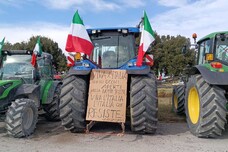Archaeologists have found a
Stonehenge-like "calendar rock" in Gela, on the southern coast
of Sicily, that they say was used as a prehistoric sundial to
measure seasons and years during the Bronze Age.
The man-made megalith was found eight kilometres from Gela,
near the prehistoric Grotticelle necropolis.
Archaeologists Giuseppe La Spina, Michele Curto, and Mario
Bracciaventi made the discovery with the technical support of
Vincenzo Madonia, while conducting surveys of WWII-era bunkers
along the state road between Gela and Catania.
Professor Alberto Scuderi, a known expert in archeoastronomy
and regional director of Italian Archaeologist Groups (GAI),
read their report and suggested a scientific confirmation of
their discovery.
An experiment was conducted in December at the winter
solstice with the help of a compass, cameras, and a video camera
mounted to a GPS-equipped drone, which confirmed the discovery
was a calendar stone.
The Gela Archaeological Museum will hold a press conference
on Thursday, January 5 at 17:00 to discuss the study, with the
participation of museum director Ennio Turco and Professor
Scuderi as well as astrophysicist Andrea Orlando of the
University of Catania, who also directs Sicily's archeoastronomy
institute; Francesco Polcaro of CERN; and Ferdinando Maurici,
director of the Museum of Terrasini.
ALL RIGHTS RESERVED © Copyright ANSA











